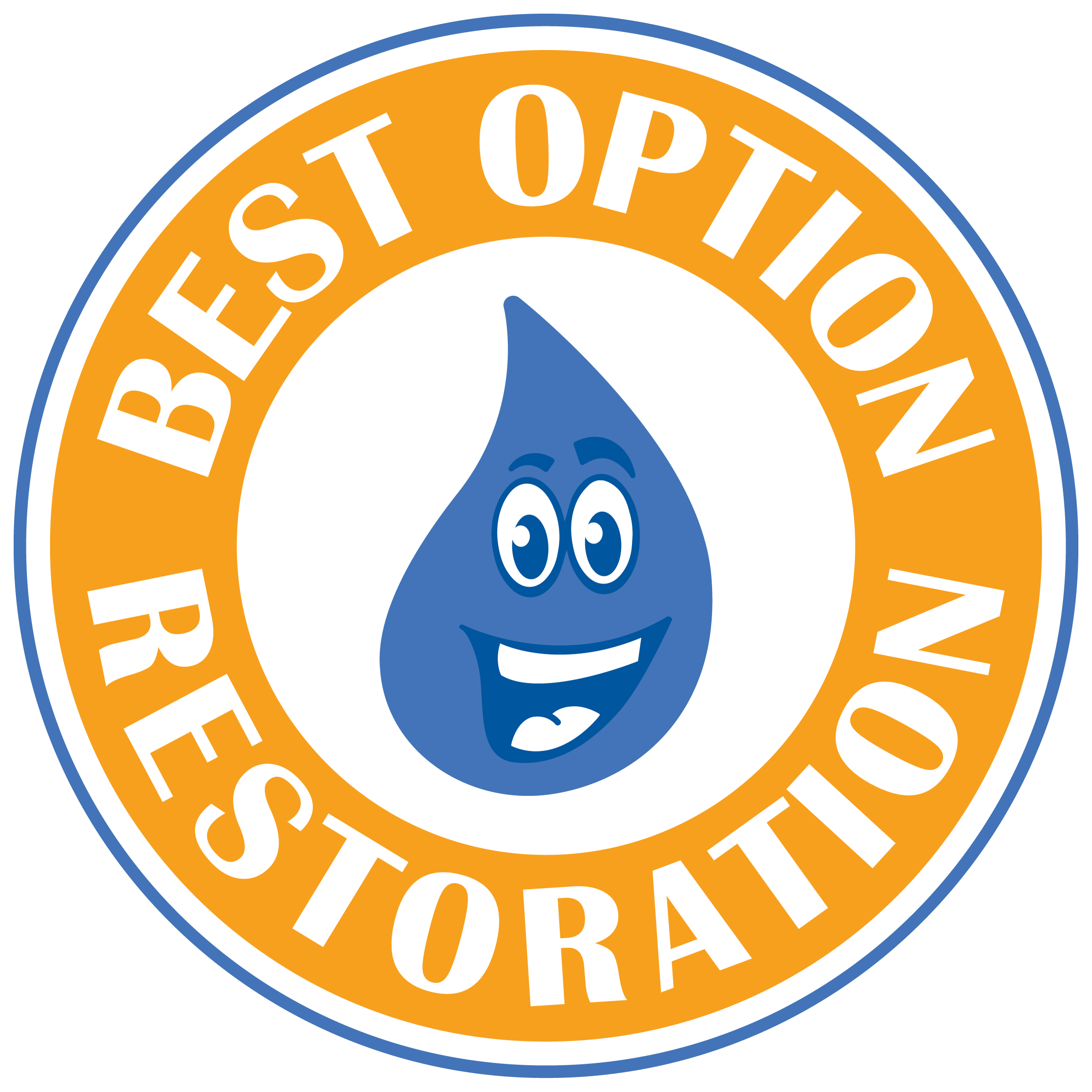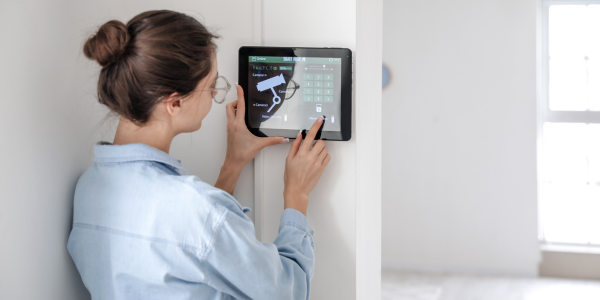The conversation around home protection has traditionally focused on emergency response and repair. But recent advances in technology are changing that. Artificial intelligence is creating new possibilities for predicting and even preventing home damages before they occur. For homeowners, that shifts the focus from cleanup and cost to awareness and action. By using data about your home’s current condition along with external risk factors, AI is making it easier to stay ahead of future issues like water damage, mold growth, or fire hazards.
How AI Predicts Risks Before They Happen
AI-driven home protection depends heavily on its ability to recognize patterns that the human eye might miss. It works by processing large amounts of information from various sources, including weather reports, construction material logs, sensor outputs, and maintenance history. The systems use predictive analysis to understand potential threats to the property based on current and historical conditions.
For example, a smart AI model looking at weather changes and past roof repairs can forecast a higher risk of leaks during a prolonged storm. Homeowners get alerts not when it’s already raining inside, but before the roof starts to fail. This kind of early warning transforms how we think about home maintenance. It becomes less about reacting, more about staying ahead of damage.
Role of Predictive Maintenance AI
One key player in preventing home damage is predictive maintenance AI. These systems don’t wait for a fault to occur. Instead, they evaluate when parts of a home may soon need repair or replacement. With precision that comes from machine learning, the software can detect gradual changes in device functionality or structural components. Whether the furnace is taking longer to heat or there’s unusual moisture near the window frames, the system picks up on it.
This pattern recognition helps identify at-risk systems, from HVAC units to sump pumps. You might not hear a small motor lagging or feel the floor beneath a slowly leaking pipe change in temperature—but AI can. By highlighting these invisible signs, homeowners can schedule repair work before a unit fails or something more severe happens.
Smart Sensors That Talk to AI Systems
Much of AI’s predictive capability comes alive through smart home sensors. Devices installed throughout key areas gather input about temperature, humidity, vibration, and airflow. These inputs stream data into an AI system that makes real-time decisions. For instance, moisture sensors installed in a basement beneath carpet or vinyl flooring can notify homeowners of minute humidity changes that precede mold development.
Smoke sensors connect to AI platforms that analyze not just the presence of smoke but patterns that resemble smoldering electronic fires or short circuits. This integration allows the system to tell the difference between steam from a shower and early signs of combustion behind a wall. It doesn’t just hear or see change—it understands it too.
Prevention of Fire, Water, and Mold Damage
Each year, thousands of homes face costly repairs due to fire, water, or mold damage. While insurance may help with financial recovery, time and disruption rarely can be replaced. AI helps reduce those risks far earlier. In dry regions, smart systems connected to electrical wiring monitor temperature spikes in junction boxes where insulation wears down. When irregular patterns occur, an alert is sent with details that allow a licensed professional to act before anything ignites.
For water damage, predictive models track a home’s plumbing cycle. If water appears to flow outside the expected routine, such as during work hours when no one’s home, it alerts the homeowner. Similarly, a slow increase in floor or wall moisture might go unnoticed without AI, but once these systems see the deviation, they prompt action that could save thousands in future repairs.
Mold prevention is another area where AI provides value. Since mold grows in concealed areas and spreads fast, timing is everything. Systems that measure long-running humidity or sense warmth plus dampness detect mold-friendly conditions before spores ever appear. That lets you fix leaks, install better ventilation, or dry affected areas before they become infested.
AI-Driven Home Protection in Older Homes
Older properties pose distinct challenges in maintaining structural integrity. Unlike new builds equipped with smart materials and uniform systems, aging structures may have outdated wiring, worn plumbing, or improper insulation. AI suits this setting well, allowing homeowners to bring intelligence into areas built before this tech existed.
Installing modern smart sensors discreetly allows the AI to gather live data without major upgrades. Tiny vibrations in wooden beams, for instance, are compared to baseline measurements. If shifting begins due to settling or minor seismic activity, the system picks it up. AI interprets subtle shifts as warning signals, suggesting reevaluation before damage progresses.
That becomes essential for properties in areas prone to high winds, heavy snow, or even temperature fluctuations that push materials to expand and contract. The goal isn’t to replace human oversight but to supplement it with inputs that are deeper and more consistent than manual checks alone could ever provide.
How Weather Data Helps Prediction
Local climate is a powerful factor in damage risk. AI incorporates live and historical weather patterns tied directly to structural conditions on the home. These platforms connect to government meteorological sources, wind maps, and satellite readings. By layering in data from regional forecasts with the existing condition of your home, the AI tailors its risk evaluation to your exact situation.
For safekeeping, that means receiving notice ahead of storms, extreme cold, or dry lightning strikes. But it also means understanding long-term threats like seasonal flooding, erosion near foundations, or mold cycles during humid months. Rather than general guidelines, homeowners receive insights that are specific, local, and proactive.
Integration With Home Appliances
AI’s effectiveness improves when it integrates into the appliances you already use. Think of your furnace, washing machine, refrigerator, or sump pump. When these items are paired with AI monitoring tools, they become part of a broader system committed to safety. They can relay performance issues automatically and connect these patterns to potential damage scenarios.
If your washing machine begins to vibrate unevenly every time it spins, the AI may track growing imbalance. If that pattern suggests worn bearings or a misaligned water hose, it can guide you toward maintenance before anything floods. Even the ice maker in your freezer could report strange compressor pressure, signaling a backend fault that affects your power use — or poses a fire risk.
This interdependence extends from utilities to infrastructure. An AI-driven platform might notice your HVAC unit is working harder during milder months. That could mean a clogged duct or cracked insulation allowing more air exchange. Fixing that cuts energy use while improving home preservation.
Human Oversight in an AI Environment
The use of predictive systems doesn’t replace the need for expert inspection or trusted local contractors. Instead, it empowers you to work with professionals more effectively. When you receive a predictive report or real-time alert, the next step involves confirming and acting. Because that notice comes earlier in the damage timeline, your options increase, and costs decrease.
Rather than waiting until a foundation crack becomes a structural risk or mold spreads across drywall, AI-supported alerts give a head start. Restorers and inspectors arrive with more context, already knowing which area to test or which wall cavity is at greatest risk of harboring spores or moisture. That speeds repairs and improves their thoroughness.
Learning Over Time Gets Better
AI systems improve through repetition. The longer they monitor your property, the more accurate their assessments become. By comparing years of sensor readings, maintenance logs, repair histories, and environmental conditions, the system recognizes unique patterns for each home. What may look normal in one building might signal high danger in another. Over time, these AI models become more personalized and tailored to your specific environment.
For homeowners, that leads to smarter alerts and fewer false positives. You aren’t bombarded by useless notifications — just clear, helpful messages that tell you something meaningful changed and what it likely means. With each decision, the system reflects its past performance and adjusts to become a better safeguard with every cycle.
Adoption of AI for Insurance Purposes
Insurance providers have started integrating AI-driven home protection into their claims and risk assessments. Homes equipped with AI monitoring tools often qualify for improved premiums or extended coverage because the risk of unreported damage reduces significantly. Some programs even partner with smart device companies to offer joint benefits like free sensors or repair credits in exchange for data access.
This growing partnership between AI systems and insurance creates a practical reason to adopt these technologies. If your home gives early signs of slow leaks, foundation movement, or gas buildup, your insurer may value your role in minimizing their risk. That cooperation can reduce both your financial exposure and the overall incident rate across their network.
AI as a Long-Term Safety Partner
Using AI for home damage prediction isn’t just about technology. It’s about rethinking how we care for one of our most valuable investments. Your home holds your history, your family, your belongings. Preventative tools like predictive maintenance AI and smart home sensors grow increasingly necessary in climates where extreme weather and overburdened infrastructure are no longer rare.
These innovations bring homeowners into the future of property care. Whether you’re trying to protect what you have or avoid the stress of major restorations, AI serves as an ever-alert partner in safeguarding your space. With real-time awareness, historical data analysis, and intelligent alerts, the risk of damage shrinks while your peace of mind grows.


